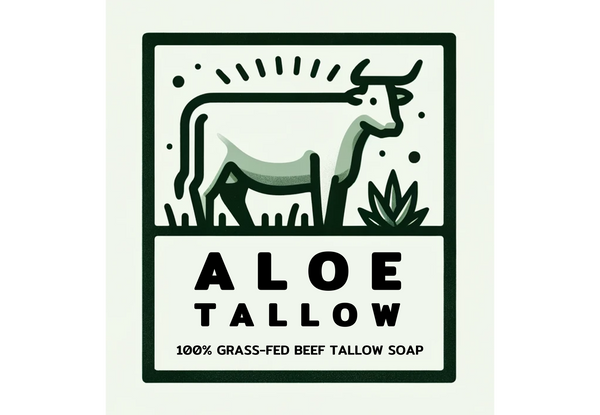Surfactants. A word that sounds like people who live at the beach, a drug class, or maybe a science fiction alien race.
Surfactants is actually short for surface-active agents, which play a crucial role in cleaning products. These molecules feature a lipophilic (fat-loving) end that attaches to grease and dirt, and a hydrophilic (water-loving) end that allows them to dissolve in water. The nature of the water-loving end, which carries an electrical charge, essentially pushes the dirt off of your skin. But what is the difference?
Soap: Nature's Cleaner
Soap is the natural product of a reaction between fats and an alkali, typically sodium or potassium hydroxide. Fats, or triglycerides, consist of three fatty acids linked to a glycerin molecule. The fatty acids react with the alkali to form soap, leaving glycerin behind. In the world of labeling, only true soaps—those made from fatty acids and alkali—can be called "soap."
Detergent: The Synthetic Alternative
Detergents, on the other hand, are entirely synthetic creations. The process begins with a hydrocarbon, derived from either petroleum or fats and oils. This hydrocarbon forms the fat-loving end of the surfactant. The addition of chemicals like sulfur trioxide, sulfuric acid, and ethylene oxide produces the water-loving end. Depending on the chemicals used, the resulting detergent can be anionic or nonionic.
One key difference between soaps and detergents is the absence of glycerin in detergents. This is why we often use conditioners after shampoo and lotion after body wash. Detergents strip away oils without providing any moisturizing benefits. Moreover, detergents are known to be skin irritants, as noted by the Journal of the American College of Toxicology.
The Labeling Game
In labeling, detergents cannot be called soap. They lack a full fatty acid and may not use an alkali. Their synthetic nature sets them apart. However, this doesn't stop marketers from using terms like "beauty bar" or "moisturizing bar" to describe detergent-based products. Additionally, some products claim to be "all-natural" because their hydrocarbon comes from coconut oil, despite being synthetic.
The Misuse of "Soap"
The term "soap" is often used loosely to refer to any cleaning product. This can be misleading, as real soap mechanically removes dirt and kills bacteria, while detergents only physically remove dirt. Understanding this distinction is crucial for informed choices about cleaning products.
So how does the majority of the country continue to wage chemical warfare by using synthetic doppelganger that they were mislead to believe is "Soap?"
What Does the FDA Have to Say About This?
Below is an excerpt from the FDA website on the black and white differences between what is "Soap" and what is chemical detergent.
"FDA often receives questions from soap makers about how their products are regulated. Here is information to help small-scale soap producers understand the laws and regulations they need to know about.
How are traditional soaps and synthetic detergents different?
Ordinary soap is made by combining fats or oils and an alkali, such as lye. The fats and oils, which may be from animal, vegetable, or mineral sources, are degraded into free fatty acids, which then combine with the alkali to form crude soap. The lye reacts with the oils, turning what starts out as liquid into blocks of soap. When made properly, no lye remains in the finished product. In the past, people commonly made their own soap using animal fats and lye that had been extracted from wood ashes.
Today there are very few true soaps on the market. Most body cleansers, both liquid and solid, are actually synthetic detergent products. Detergent cleansers are popular because they make suds easily in water and don't form gummy deposits. Some of these detergent products are actually marketed as "soap" but are not true soap according to the regulatory definition of the word.
What’s the regulatory definition of soap?
Whether a product is a “soap” in the traditional sense, or is really a synthetic detergent, helps determine how the product is regulated. So, let’s take a look at how “soap” is defined in FDA’s regulations;
To meet the definition of soap in FDA’s regulations, a product has to meet three conditions:
- What it’s made of: To be regulated as “soap,” the product must be composed mainly of the “alkali salts of fatty acids,” that is, the material you get when you combine fats or oils with an alkali, such as lye.
- What ingredients cause its cleaning action: To be regulated as “soap,” those “alkali salts of fatty acids” must be the only material that results in the product’s cleaning action. If the product contains synthetic detergents, it’s a cosmetic, not a soap. You still can use the word “soap” on the label.
- How it's intended to be used: To be regulated as soap, it must be labeled and marketed only for use as soap. If it is intended for purposes such as moisturizing the skin, making the user smell nice, or deodorizing the user’s body, it’s a cosmetic. Or, if the product is intended to treat or prevent disease, such as by killing germs, or treating skin conditions, such as acne or eczema, it’s a drug. You still can use the word “soap” on the label."
(Source: https://www.fda.gov/cosmetics/cosmetic-products/frequently-asked-questions-soap)
In conclusion - check your ingredient labels. Unless you have carefully vetted your cleaning agent, then there is a chance that you are unintentionally using detergent instead.

